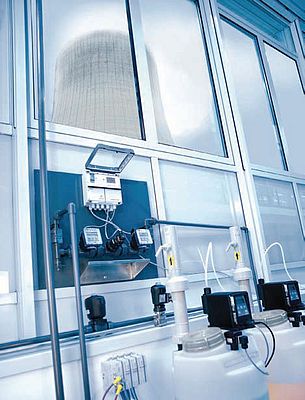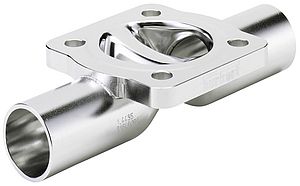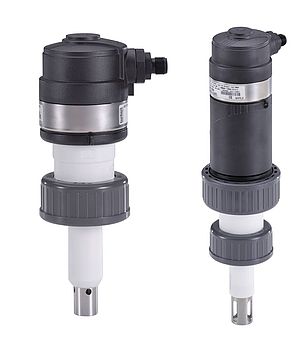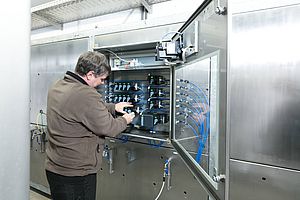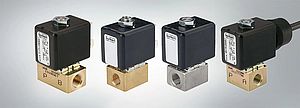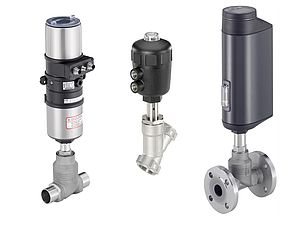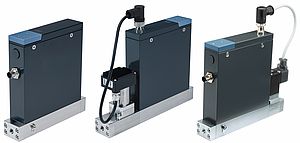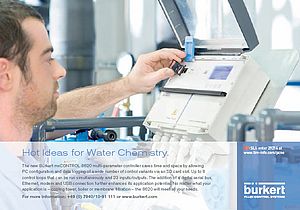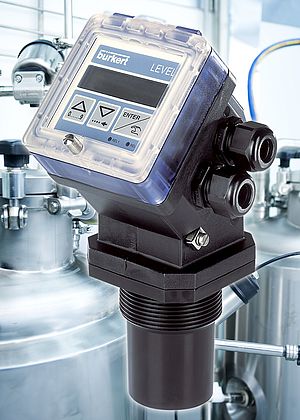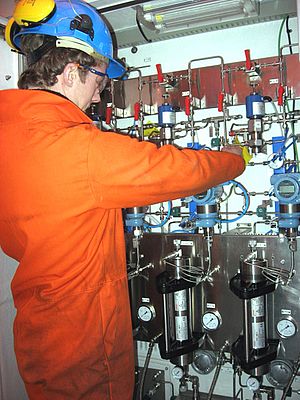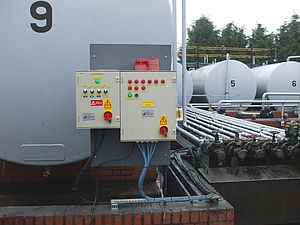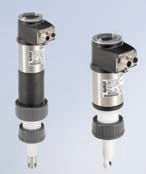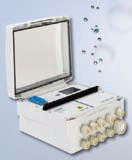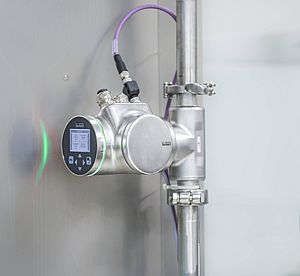Securing the requested water quality requires continuous control of source water, and permanent surveillance of the treatment process. At the same time, analysis requirements and compliance with environmental provisions create a growing need for analysis recording and transmission of relevant data concerning water output and quality. The automation of water treatment systems reduces costs. It increases productivity, saves water and energy, and minimizes the risk of chemical overfeed or underfeed while simplifying compliance with environmental standards. Water treatment systems for cooling towers can be controlled manually when water quality and operating conditions are consistent. Samples then have to be taken regularly by technicians, who analyse the process conditions before determining the ratio between the supply of fresh water and chemicals required. They adjust the pH, ORP (oxygen reduction potential), conductivity, alkalinity, hardness, corrosion and other factors. These steps require in-depth experience as well as time and manpower. Sometimes however, the initial conditions may not be simple enough: high personnel costs, scarce and expensive water resources, and inconsistent water quality may create a need for more than manual chemistry control. This is where multi-parameter transmitters have recently established themselves. They are used as inline signal conditioners, sending analogue inputs to PLCs (programmable logic controllers). However, as global competition increases for water treatment OEMs (original equipment manufacturers), these companies are driving their suppliers to incorporate multiparameter transmitters into single-platform, multifunction fl exible controllers—reducing controller and instrumentation costs in some cases by as much as 50 percent as well as saving water and chemical costs. The increasing concentration of minerals which is a result of water evaporation in cooling towers creates diffi culties for heat exchange processes. Mineral deposits (scaling) in the pipes of heat exchangers affects their heat transfer performance. Bacteria can produce organic residues (fouling), which also compromise process effi ciency. The continual automatic measurement and control of pH, ORP, conductivity, alkalinity, hardness, corrosion and other factors avoid these problems. The use of an automated controller with integrated networking capabilities— like the multi-channel mxCONTROL 8620—in combination with the necessary analytical sensors, valves, fl ow transmitters and switch’s, allow a normal conductivity only controlled cooling tower to go from a two turn system to a seven or eight turn system. This increased number of turns means less water is required to remove the same amount of heat from the plant. Some water stressed regions have taken note of this and are even offering fi nancial incentives for plants to upgrade their controller in an effort to conserve water. The central control unit regulates the feed of chemicals that prevent corrosion, scaling and fouling processes. Biocides for example are added over a predetermined period of time as determined necessary during an initial water analysis. An example of chemistry cost savings is the Biocide pre-bleed function. Continuous monitoring and effective control of biocides provide greater protection from harmful bacteria. Biocides preventing legionella, algae and other bacteria, are added periodically over a 2 week window. It is often the case when biocide chemicals are added, loop conductivity increases. This being the case, it is some times benefi cial to bleed to a conductivity set point that is lower then normal. This is called the “Biocide PreBleed Setpoint“. To prevent bleeding expensive chemicals to drain, an internal interlock prevents the bleed valve from opening while chemicals and biocides are added to the system even if high conductivity set points are reached. In addition, a time delay “lock out“ prevents the bleed valve from opening for a predetermined period of time after the chemical is added to ensure that the added biocide has maximum effective contact time in the system to kill all unwanted organics. Cooling system corrosion is another unwanted expense factor. Accurate pH and conductivity readings cannot always guarantee a low corrosion environment throughout the system. A corrosion sensor is often connected to the control unit. If a predetermined corrosion limit is reached, the control unit will shut down the pH dosing module and energize the general alarm alerting local maintenance to investigate. In addition, corrosion inhibitor chemicals can be added based on a feed water ratio automatically. By allowing parameter setting of a wide number of control variants via an SD card, serial interface or modem connection, the mxCONTROL 8620 state-of-the-art modular multichannel control system, saves time, space and equipment costs in cooling towers, as well as in boilers, dead end and cross flow membrane filtration systems. The control system is specifically designed for seamless integration into countless chemical or process control applications. Its modular design integrates multiple, customer-selectable inputs and outputs (4-20mA, Pt100, digital, relay and transistor), combines these with various control parameters resulting in dozens of flexible configuration possibilities. The key to this high level, automated control is a 32-bit micro-process controller, supported by an integrated 512 kB flash memory for parameter storage and additional languages. This enables the mxCONTROL to support up to a maximum of eight active control loops with minimum sample periods of 100ms (50ms for 4 active loops). The unit’s functionality and flexible software configuration possibilities allows for high modularity. The primary functions include: Conductivity Control, controlled continuous dosing through pulses, automatic or manual bleed off; Chlorine/Redox and pH control and PI-controlled continuous dosing through pulses or analogue outputs; Flow Control and totalizing, with K-factoring; and Biocide Dosing over a 14-day program, featuring 8 dosing events for each of the two channels per day. Understanding the needs of the water treatment users, and combining these with the processing power of the mxCONTROL, has led to the introduction of intelligent control of the water parameters that significantly reduces waste by avoiding unnecessary or untimely dosing and bleeding-off.
Water treatment control for cooling towers
Water treatment systems in cooling towers are dynamic entities that are subject to numerous factors like varying operating and environmental conditions, seasonal alteration in water chemistry, and compliance with tightening environmental regulations.
- by Bürkert Fluid Control Systems
- November 1, 2009
- 345 views



